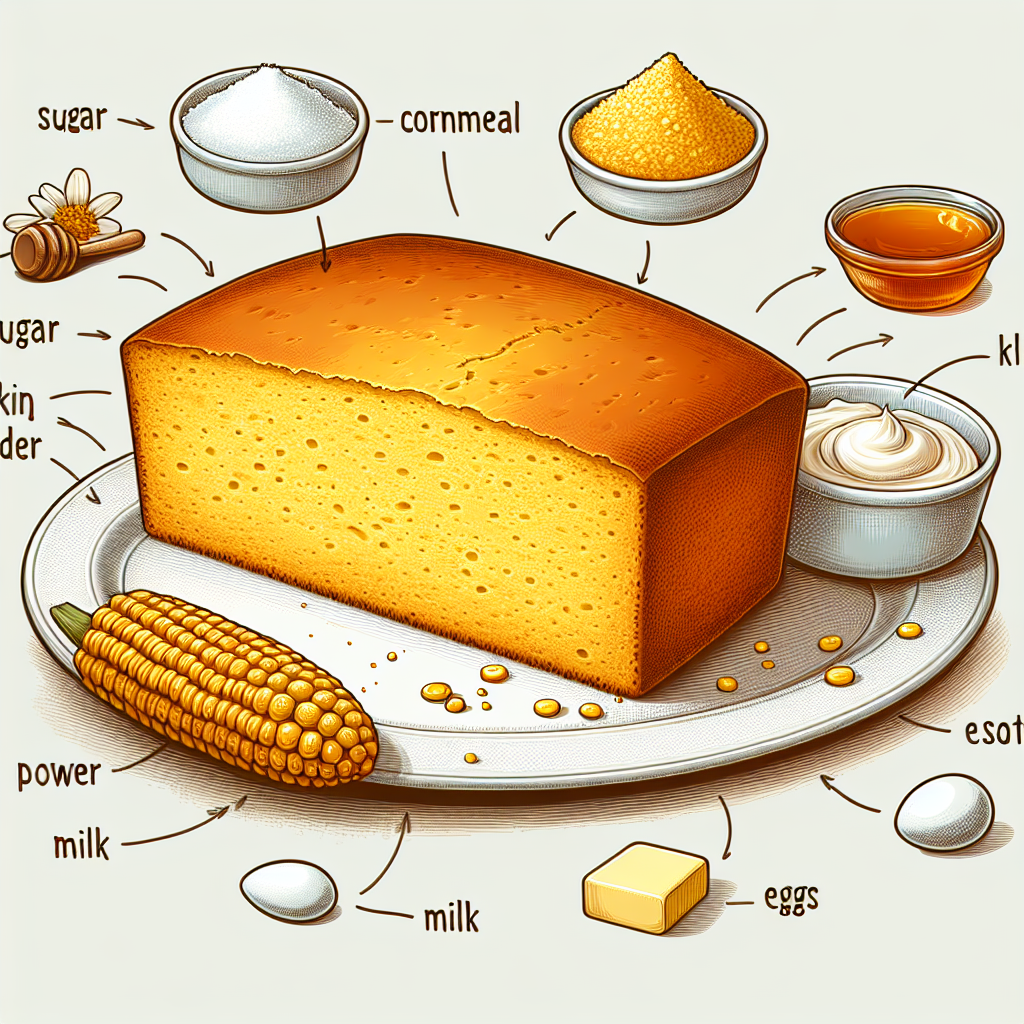Delightful Cornbread Recipe: A Tasty and Nutritious Comfort Food

Cornbread is a staple in many Southern kitchens, loved for its crumbly texture and slightly sweet flavor. As a versatile dish, cornbread can be served alongside stews, chili, or simply enjoyed with a pat of butter. Whether sweet or savory, this delectable bread has a rich cultural heritage that has stood the test of time.
The Cultural Significance of Cornbread
Cornbread dates back to early Native American cultures who cultivated maize long before European settlers arrived. It was these indigenous populations that first developed recipes that used ground corn, which eventually evolved into what we now know as cornbread. Over the centuries, cornbread took on many variations, influenced by Southern cooking traditions, African American culinary practices, and the local ingredients available throughout the United States.
No Southern barbecue feast, family reunion, or holiday gathering feels complete without a warm basket of cornbread. It has become a symbol of comfort and hospitality—a food that brings people together around the table. Whether baked in a skillet, baked in a pan, or even grilled, the aroma of cornbread wafting through the house creates memories that last a lifetime.
Nutritional Benefits of Cornbread
Beyond its cultural significance, cornbread is a surprisingly nutritious option that offers several health benefits when made with whole ingredients. To explore its nutritional profile more thoroughly, visit Snap Calorie's Cornbread Nutrition Page to get insights on calories, macronutrients, and vitamins.
While traditional recipes often call for refined cornmeal and added sugars, you can easily make a healthier spin on the classic dish. Whole grain cornmeal is higher in fiber and essential nutrients like iron and magnesium. Additionally, cornbread can be made gluten-free by using cornmeal and other gluten-free flours.
Try This Simple Cornbread Recipe
Now, let’s get to the star of the show—our delightful cornbread recipe! Here's an easy and delicious version that can be whipped up in no time and will surely impress your family and friends.
Ingredients:
- 1 cup yellow cornmeal
- 1 cup all-purpose flour (or gluten-free flour)
- 1/4 cup granulated sugar (adjust to taste)
- 4 teaspoons baking powder
- 1/2 teaspoon salt
- 1 cup milk (can substitute with almond or oat milk)
- 1/4 cup vegetable oil or melted butter
- 2 large eggs
Instructions:
- Preheat the Oven: Preheat your oven to 400°F (200°C). Grease an 8-inch square pan or a cast-iron skillet for that perfect crispy edge.
- Mix Dry Ingredients: In a large mixing bowl, combine the cornmeal, flour, sugar, baking powder, and salt. Whisk until well combined.
- Add Wet Ingredients: In another bowl, whisk together the milk, oil (or melted butter), and eggs. Pour the wet mixture into the dry ingredients and stir until just combined. Be careful not to overmix; a few lumps are okay!
- Bake: Pour the batter into your prepared pan or skillet. Bake for 20-25 minutes or until golden brown and a toothpick inserted into the center comes out clean.
- Cool and Serve: Let the cornbread cool for a few minutes before slicing. Serve warm with butter, honey, or your favorite spread.
Elevate Your Cornbread
Consider adding variations to your cornbread for added flavor—try incorporating cheese, jalapeños, or even fresh herbs like chives and rosemary. You can also enjoy your cornbread with savory toppings like chili or a side of succotash for a well-rounded meal.
Conclusion
Cornbread is more than simply a side dish; it’s a dish with deep-rooted cultural significance and an impressive nutritional profile. Whether you're using it to complement a main dish or savoring a slice on its own, each bite of cornbread can transport you to simpler times. So gather your ingredients, fire up the oven, and indulge in this timeless comfort food!
Happy baking! 🍞